Viking Modular makes a variety of SSDs for enterprise users, based on the powerful SF-1500 controller form SandForce. We recently reviewed Viking Modular’s unique SATADIMM SSD and found it very appealing, so there’s little reason to doubt that we’ll enjoy their 2.5" enterprise SSD; essentially the same specs as the SATADIMM, just in a more conventional form factor.
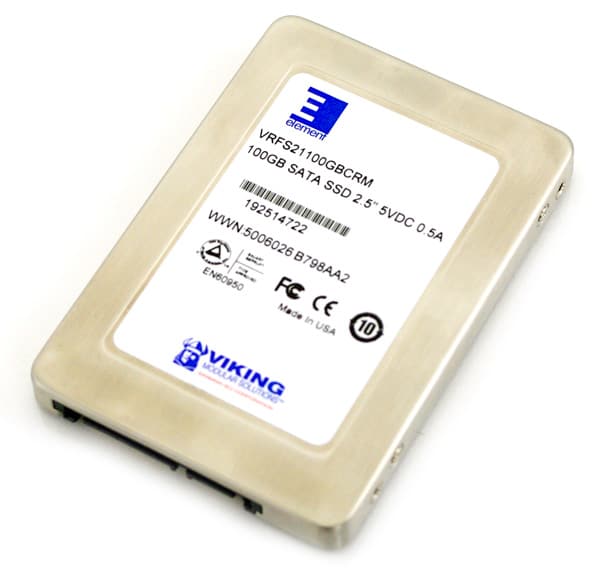
The line of 2.5" SATA 3Gb/s drives is highlighted by the SF-1500 (SF-1200 available too), complete with super capacitor for power fail data protection, and either SLC or MLC NAND. The SLC versions are available in capacities form 50GB to 200GB and the MLC version from 50GB to 400GB; both offer sustained reads of up to 260 MB/s. In our lab for this review is the 100GB MLC unit.
Viking Modular Enterprise 2.5" SSD Specs:
- Capacity – SLC 50GB to 200GB, MLC / eMLC 50GB to 400GB
- Sustained Read / Write 260 MB/s
- Sustained Random Read & Write IOPS Up to 30,000 IOPS
- Interface SATA 3Gb/1.5Gb, S.M.A.R.T., NCQ, hot pluggable
- ECC Up to twelve 9-bit symbols per 512 byte sector
- Bit Error Rate (BER) < 1 in 1017 bits read
- Power Fail Data Protection Super Capacitor (SF-1500 processor)
- Endurance 5 Years
- Operating Temperature – Commercial 0°C to 70°C
- Non-operating Temperature -40°C to 85°C
- Altitude 80,000 feet
- Humidity 5% to 95%, non-condensing, relative
- Power- Active 2.0 watts, Idle 0.9 watts
Aesthetics
Visually, the Element 100GB certainly speaks to its roots as an enterprise-class SSD. The enclosure is a no-nonsense silver with basic sticker: this wasn’t designed for looks, it was designed for work. I do like the added touch of the platter spacing indentation on the bottom though, hinting at the ‘older’ drives that still used moving hardware inside.
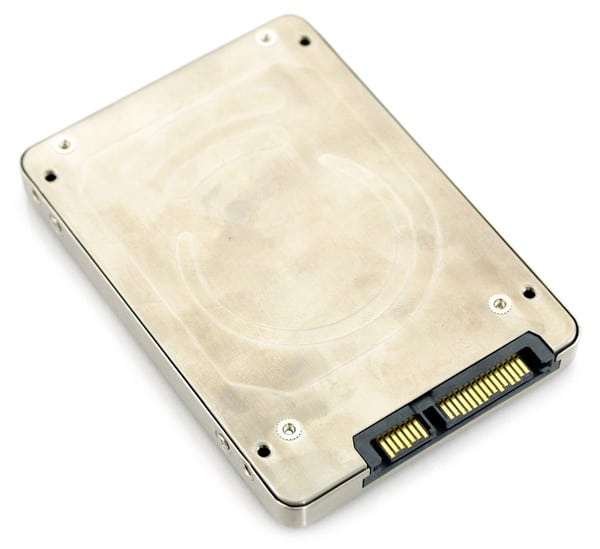
The front includes just the standard SATA data and power connector. No dip-switches for firmware flashing are evident from the outside.
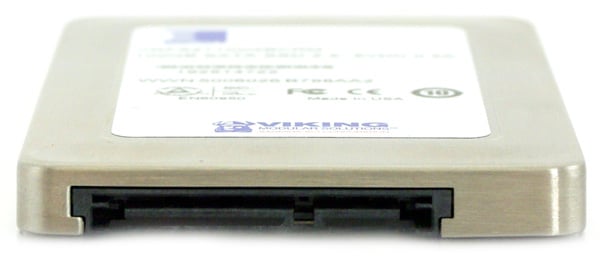

Disassembly
Fortunately, the Element 100GB is also pretty easy to tear down, using just four screws on the sides of the enclosure.
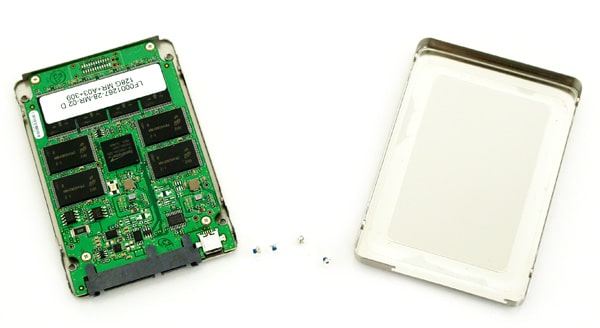
What we find inside is the SF-1500 controller, Micron NAND, and the super cap characteristic of SF-1500 implementations. One very interesting feature not mentioned anywhere is the mini-USB port we found upon disassembling this SSD. Located next to the SATA power and data connector, the USB port seems to only be useful for debugging. Plugging it into our system only powered the drive, with nothing showing up as a new device. This was useful in testing the super caps power backup capability.
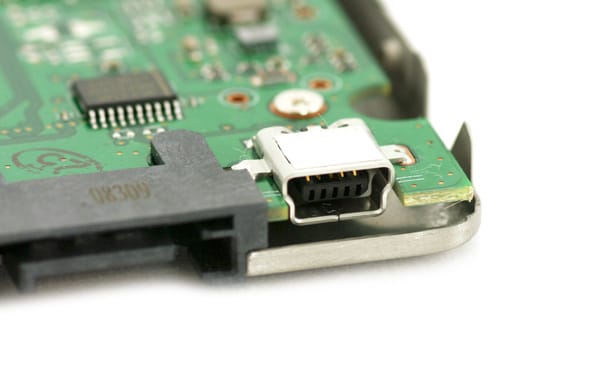
With a drive activity light located near the USB port, we were able to estimate that the drive could stay powered for roughly two seconds after losing power. Standard SSDs would lose power immediately. For a drive being written to during a power drop, two seconds is a lot of spare time.
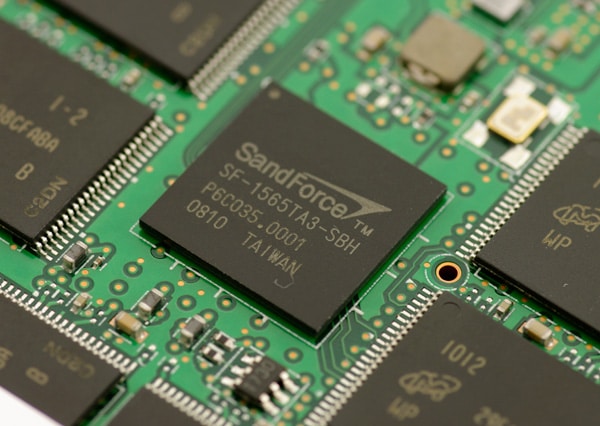
This Viking Modular SSD is powered by the SandForce SF-1565TA3-SBH enterprise controller. It also includes eight 8GB Intel 29F64G08CFABA flash modules located on each side of the circuit board, making it sixteen in total.
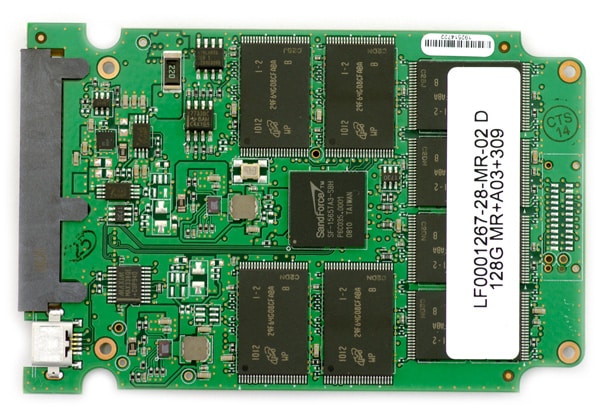
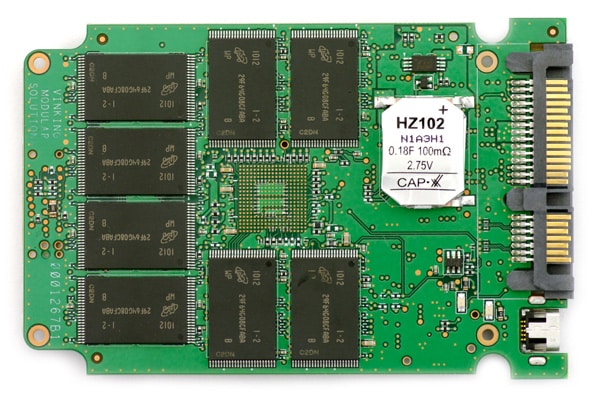
Synthetic Benchmarks
Part of what we’re going to wind up trying to tease out is just how different – or how similar – the SF-1200 and SF-1500 are. We don’t expect major variation here since they use essentially the same silicon. Our usual test bench consists of a Dell XPS 9000 with the drives attached to Intel’s ICH10R SATA controller, running in AHCI mode at 3.0Gbps with TRIM enabled. The system runs on Microsoft Windows 7 Home Premium 64-bit.
For our synthetic tests, we do a couple runs with IOMeter, check in with CrystalDiskMark, then simulate working conditions with IOMeter again.
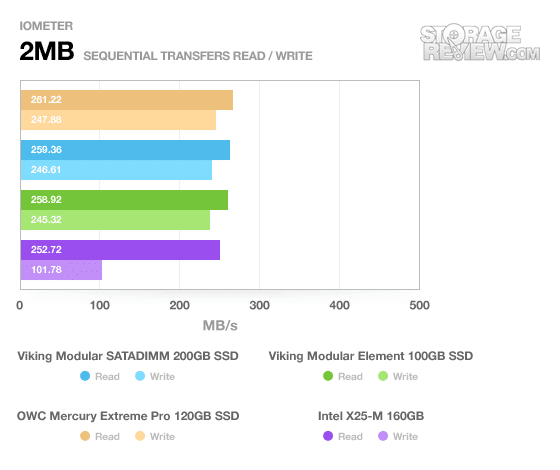
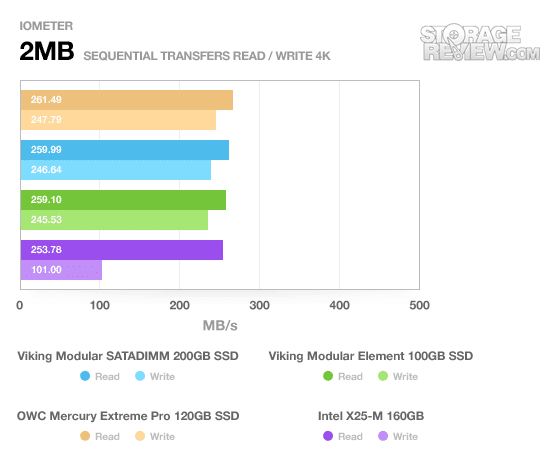
Our first set of tests sees the SF-1500-equipped Element running essentially in parity with the other two SandForce drives, including our reigning champion, the OWC Mercury Extreme Pro. There isn’t a massive difference in performance here; the Element may be at the back of the pack, but it’s never by more than 2MB/sec.
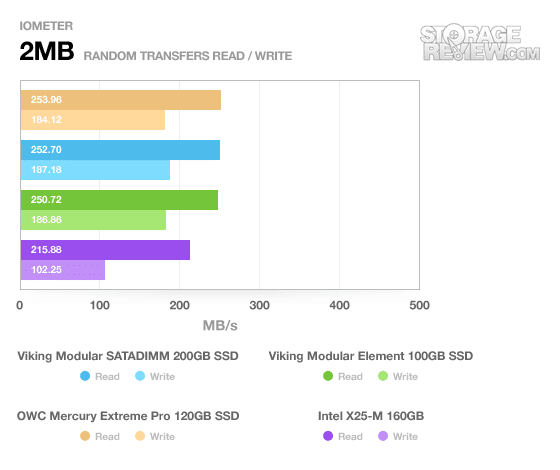
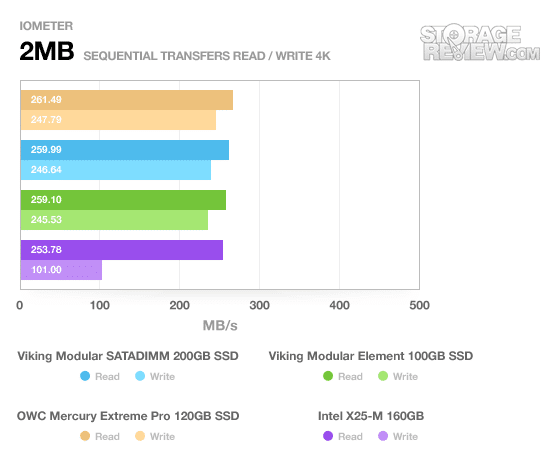
Random transfers bear themselves out the same way: there’s never more than a 3MB/sec performance difference.
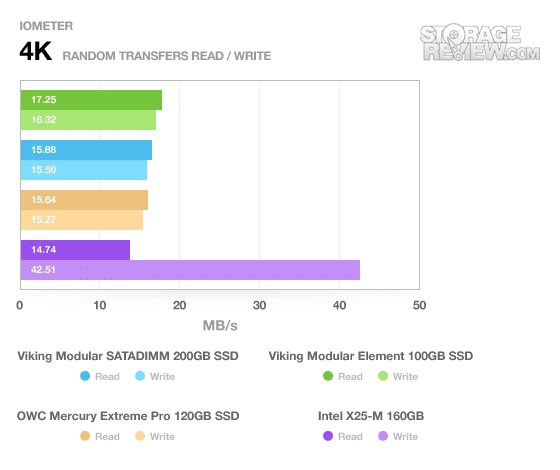
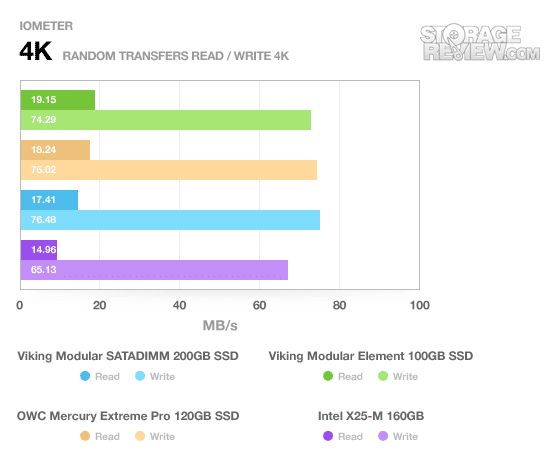
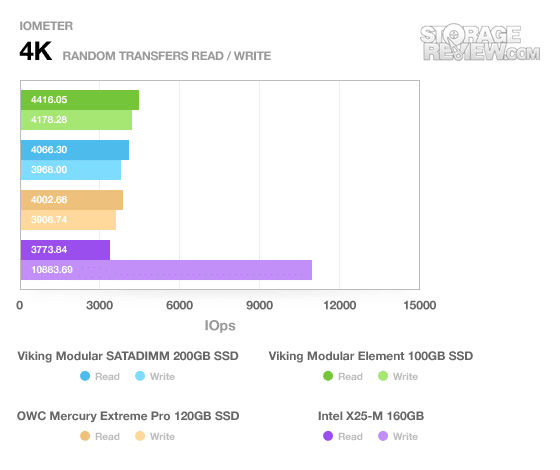
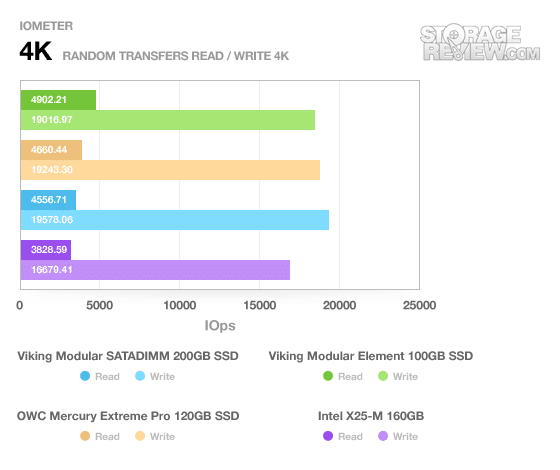
Once we get to 4K random transfers, things start to spread out a little bit and the Element is able to start to pull ahead from the pack a bit, producing the highest read numbers in every test while write performance remains consistent with the competing drives. Meanwhile, Intel’s venerable X25-M spends most of its time at the back of the pack.
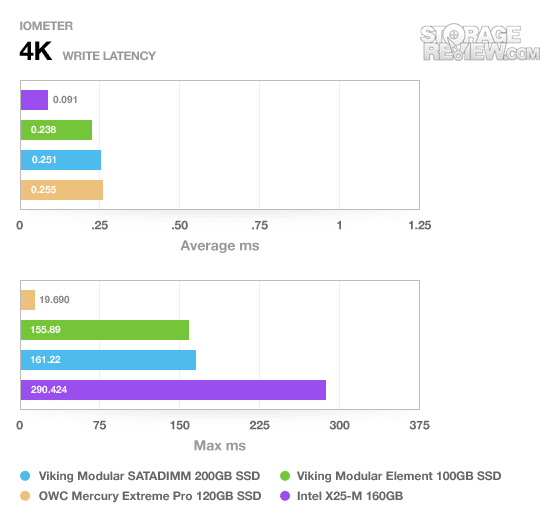
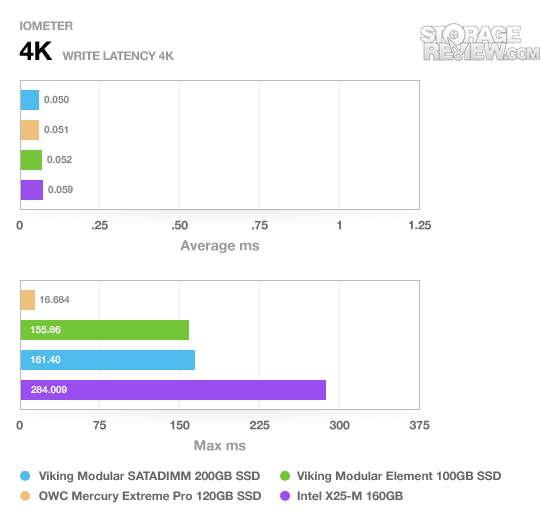
The latency figures on the Element are solid if not exceptional; it hangs fine, but OWC’s drive produces much better numbers. The X25-M continues to trail behind.
With these numbers under our belt, we can see how IOMeter’s best case scenario compares against CrystalDiskMark’s.
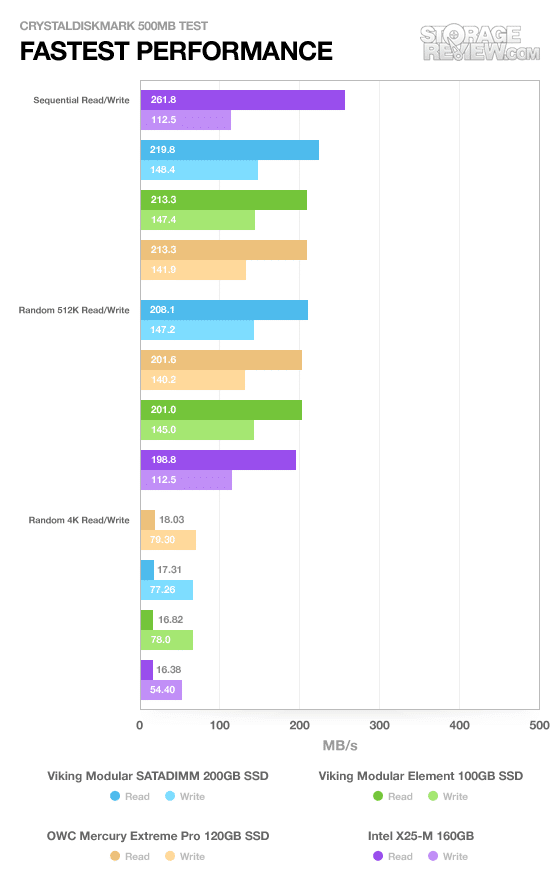
There isn’t a whole lot to say here. The SandForce-based drives all hang fairly close together and trade blows while the Intel drive bounces around the charts like a rabbit on amphetamines. Performance remains reasonably consistent with IOMeter’s tests.
Speaking of IOMeter, it’s time to check back in on the simulated server workloads.
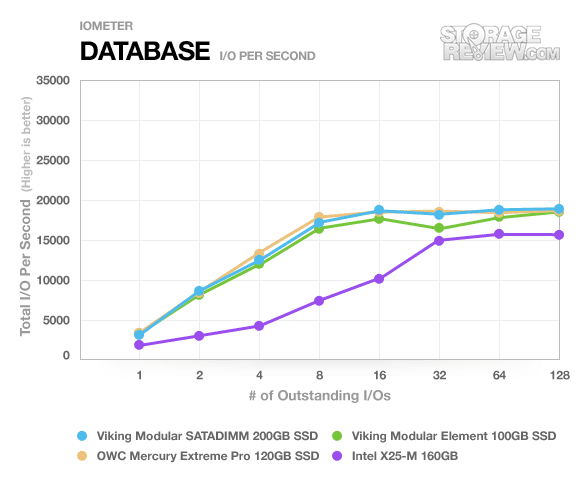
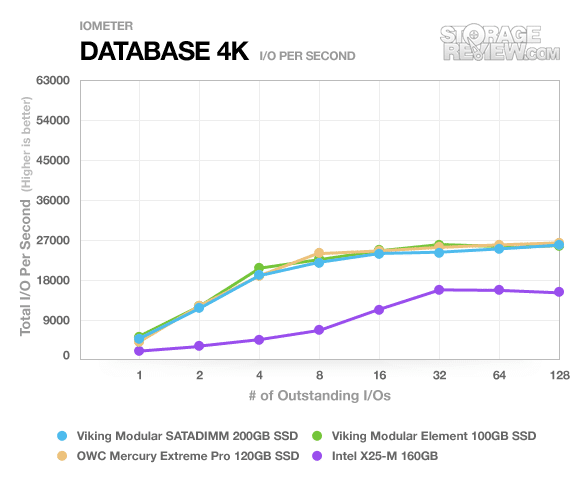
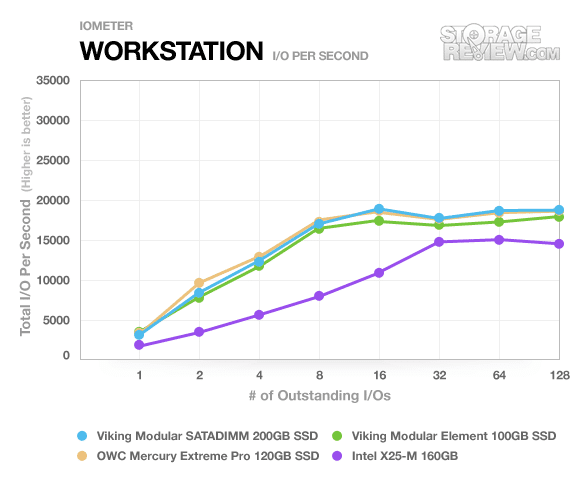
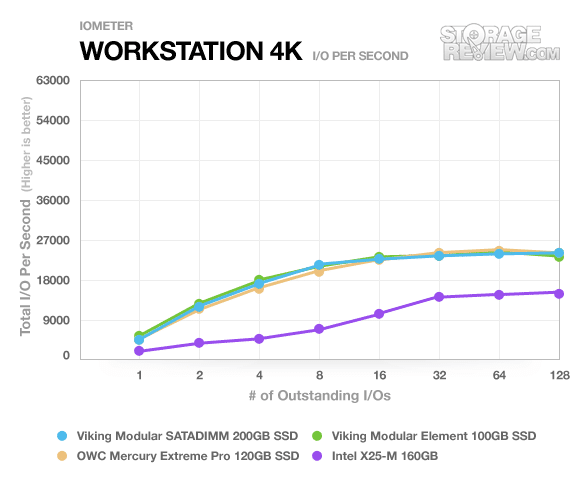
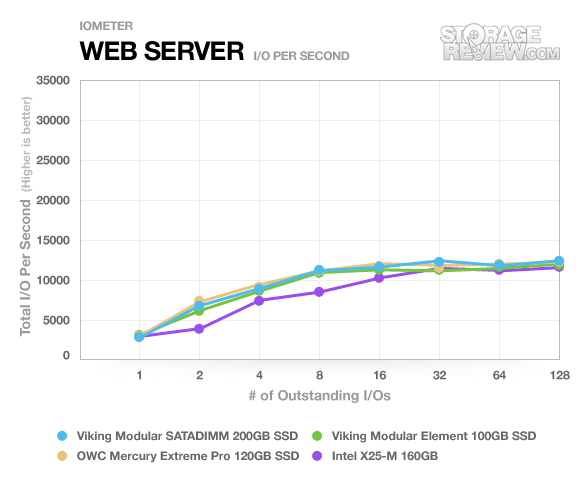
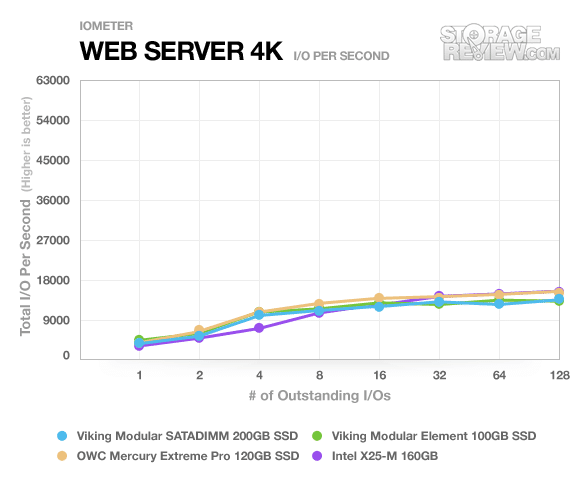
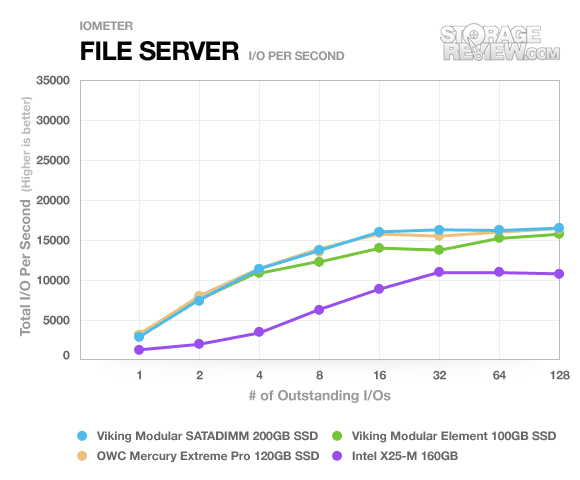
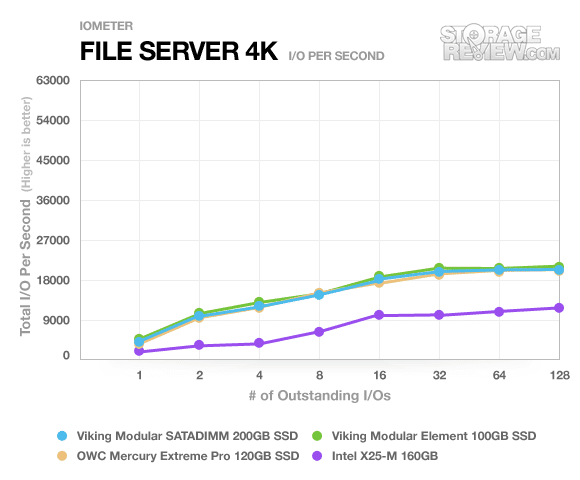
The SandForce SSDs all cluster together, but it seems like overall the Element is producing slightly lower numbers of operations. If the SF-1500 is supposed to be the better, faster firmware, it isn’t showing up here.
Real-World Benchmarks
Now we move on to simulating real life workloads to see how the Viking Modular Element SSD fares when faced with an actual usage scenario. So far SF-1500 hasn’t really earned its keep compared to SF-1200, but more real-world testing can tease out differences.
Our real-world benchmarks use custom StorageMark 2010 traces.
The first trace is the “HTPC” test, which includes playing one 720p HD movie in Media Player Classic, playing one 480p SD movie in VLC, downloading three movies simultaneously through iTunes, and recording one 1080i HDTV stream through Windows Media Center over a fifteen minute period
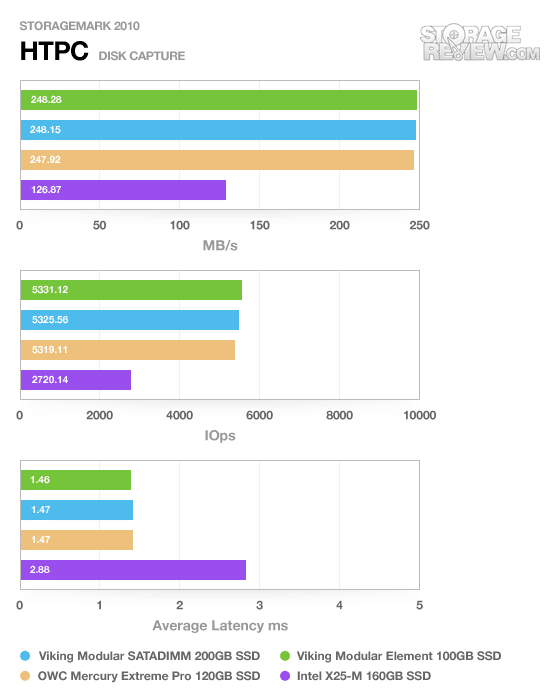
In our “HTPC” test, the Viking Modular Element comes out ahead at every discipline, but the lead is a negligible one: all the SandForce drives offer excellent performance here. Intel’s drive just can’t compete.
The second trace is the “Productivity” test, which consists of: a three hour period operating with 32-bit Vista running Outlook 2007 and connected to an Exchange server, browsing the internet with both Google Chrome and Internet Explorer 8, editing files in Office 2007, viewing PDFs in Adobe Reader, an hour of local music playback, and then two additional hours of streaming online music from Pandora.
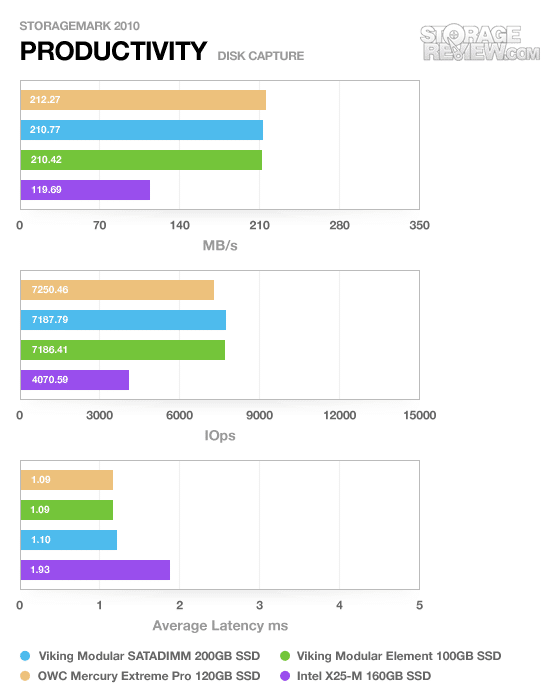
The “Productivity” test sees the Element lose its lead, but the loss isn’t devastating, and the performance differences between the three SandForce drives remains miniscule.
The third and final trace is the “Gaming” test; this test is almost entirely read-based, and consists of Windows 7 Ultimate 64-bit configured with Steam, and traces performance loading and running Grand Theft Auto 4, Left 4 Dead 2, and Mass Effect 2.
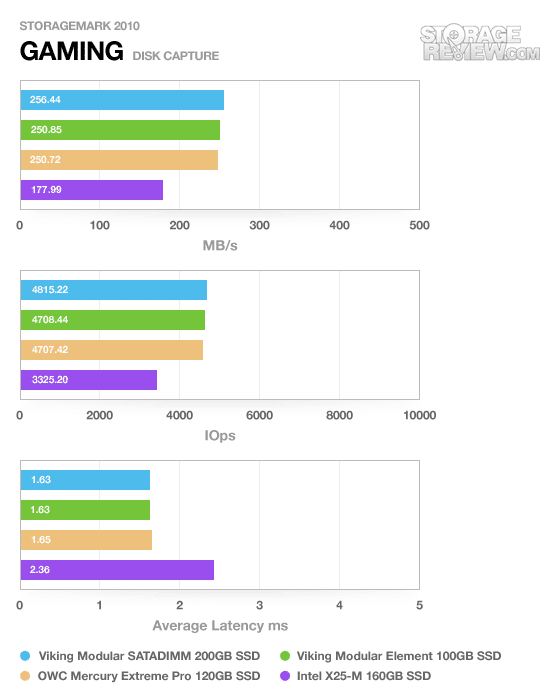
With our “Gaming” test we see the Element has populated first, last, and now middle places among the SandForce drives. Differences between them remain academic at best, while the Intel drive continues to lag behind.
Power Consumption
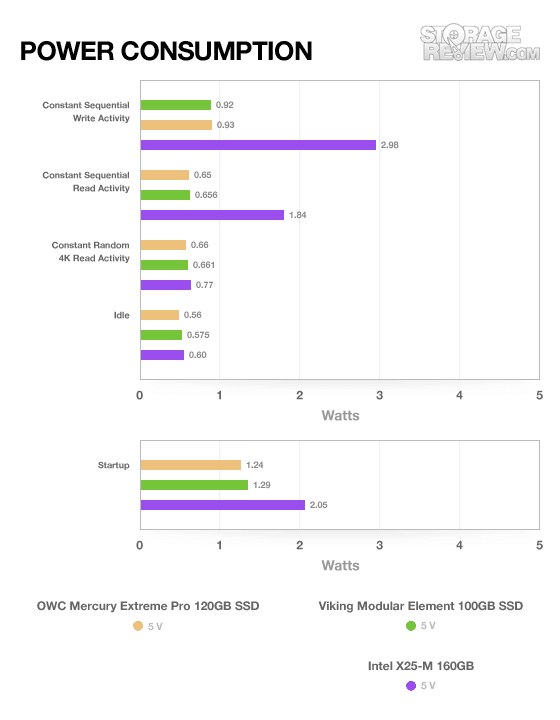
When we get to testing the power consumption of the Element, we find it essentially hanging tightly with our current champion, the OWC Mercury Extreme Pro. Meanwhile, Intel’s drive pulls more power than either SandForce drive.
Conclusion
The enterprise-class 100GB Viking Modular Element SSD offers solid performance numbers in our tests; in step with other SandForce-based drives, including the SF-1500 powered Viking Modular SATADIMM. In comparison to the more common consumer-grade SSDs, these drives offer higher reserves for wear leveling and a super cap for added data protection in the event of a power outage. Enterprise shoppers in need of an SSD will certainly appreciate the extras the Viking Modular Element series brings to the table. While there’s nothing entirely remarkable about the Element in terms of performance, design or function, at the end of the day, that’s a good thing in the enterprise space. The Viking Modular SSD performs as it should, while folding in the benefits associated with enterprise-class SSDs.
Pros
- Consistent performance with other SandForce drives
- SF-1500 enterprise-class SandForce controller with super cap
- Extra flash capacity for wear leveling
Cons
- Internal USB port for diagnostics only
Bottom Line
If you need wear leveling, a super cap equipped SSD, and the performance of what the SF-1500 has to offer, the Viking Modular Element SSD is a great solution.




 Amazon
Amazon